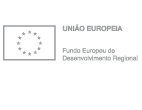The art of bending tin
Add MyTrip
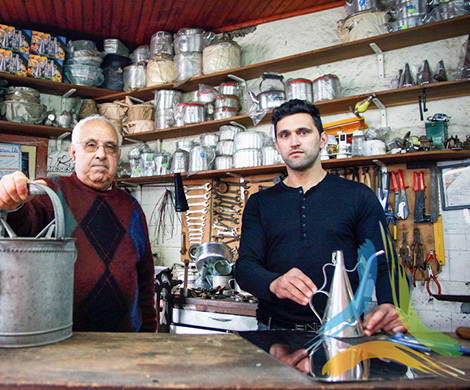
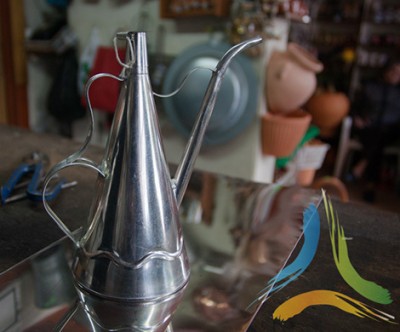
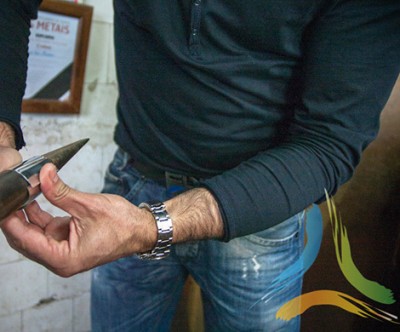
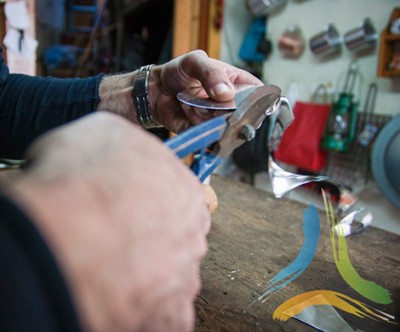
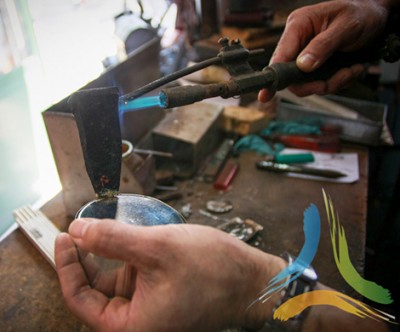
41.298670238349835
-7.74418082241823
The art of bending tin
From smooth, grey plate, Rui Santos creates olive oil cruets, buckets, lamps, pitchers, funnels, watering cans and other pieces. His love for tinwork is almost a genetic legacy: “Everything I know I owe to my father, who was my master.”...
Presentation
From smooth, grey plate, Rui Santos creates olive oil cruets, buckets, lamps, pitchers, funnels, watering cans and other pieces. His love for tinwork is almost a genetic legacy: “Everything I know I owe to my father, who was my master.” When I left school, I’d stay here toying with the scissors and the hammer. That’s how I developed a taste for shaping tin,” he says.
The last twenty years have been spent in his small workshop, where handicrafts followed the manufacture of household, agricultural and construction tools. “Everything was made in plate: the watering cans, the buckets, the lining for grape harvest baskets, the pitchers for olive oil. There was no stainless steel or plastic then.”
Their former usefulness lost, these objects found a new lease of life as decorative pieces. The cruet and the lamp, now symbols of nostalgia, are the most popular items. “It’s because they evoke the light at the time of our grandparents. People take them to remember how they studied, sewed, cooked,” Rui, 39, recalls.
With the advent of plastic and because people are unaccustomed to mending worn pieces, tinwork became an endangered art. However, Rui is proud of continuing his father’s tradition. “I’m like a football player: I’m paid to do what I like.”
Age-old risks
Tinplate wastage covers the workshop floor. The finished pieces are on display on the window for anyone passing by. The time each piece takes varies: an oil cruet only takes 20 minutes, whereas a lamp, made of 14 small pieces, takes more than an hour.
Rui uses mainly tinplate or galvanised plate. It is on them that he superimposes the patterns and etches the outlines of each piece. After cutting them with tin snips, the artisan goes to the anvil, his faithful ally.
Rui pounds the plate with a wooden hammer until he gets the desired shape. Finally, the blowtorch joins all the components of the piece together and the welding spatter is removed with the scraper.
Market niches
Faced with the need to adapt to modern times, the Rui has created patterns to make miniatures. Designed in detail, the small watering cans, olive oil cruets and buckets are sought after as gifts for festive occasions.
To the replicas of old models, Rui adds another range: creative pieces. “When I’m strolling, having a coffee or even at the disco, ideas come to my mind which I then try to replicate. It was like this with the Trás-os-Montes picture, the one with the mountains, the sun and everything made in tin.”
There are also pieces that combine innovation with recycled materials, such as reused faulty lamp bulbs to build oil lamps.
The piece which shows the highest level of craftsmanship earned him the National Handicrafts Prize in 2005. “It was a 56cm tall gypsy oil cruet in an oval shape. I really put my heart into it and it bore fruit,” he points out. Meanwhile, he saw his grandmother’s miniature kitchen awarded a distinction in Zamora.
An oil cruet is the cheapest item: only four euros. The cost of a miniature, because it “involves a lot of work”, ranges from five to six euros. For a watering can, the client will be 30 euros out of pocket and, if he chooses a chest, he will have to pay 35 euros.
Curiosity beyond borders
Tin pieces are sought after by tourists who “have more purchasing power” as well as by the Portuguese. “Foreigners value them more, surely because they’ve never seen this art in their own countries or, if they have, it was many years ago.”
Rui often has an audience as he works. Tourists come in the workshop to film, take photos and bombard him with questions. “They look at the oil lamps and say it’s a very pretty piece, but they don’t know what it’s for. I have to explain to them that it was the illumination used in the old days.”
His work has travelled to Australia, New Zealand, the United States, Brazil, Spain, Italy, Germany and The Netherlands. “When I made the limited 100-piece run of the winning oil cruet replica, they were sold in under a year, and what’s more their price was quite high,” he says with glee.
Text: Patrícia Posse | Daniel Faiões
Schedules/Prices
Contacts
Owner/Responsible
Rui Santos
Rui Santos
Address
Rua Isabel de Carvalho, nº 23
5000-608 Vila Real
Other points of sale:
Bairro Alto in Lisbon and Algarve
Rua Isabel de Carvalho, nº 23
5000-608 Vila Real
Other points of sale:
Bairro Alto in Lisbon and Algarve
Phone
+351 259322350
+351 259322350
Cellphone
+351 964310123
+351 964310123
Latitude
41.298670238349835
41.298670238349835
Longitude
-7.74418082241823
-7.74418082241823









